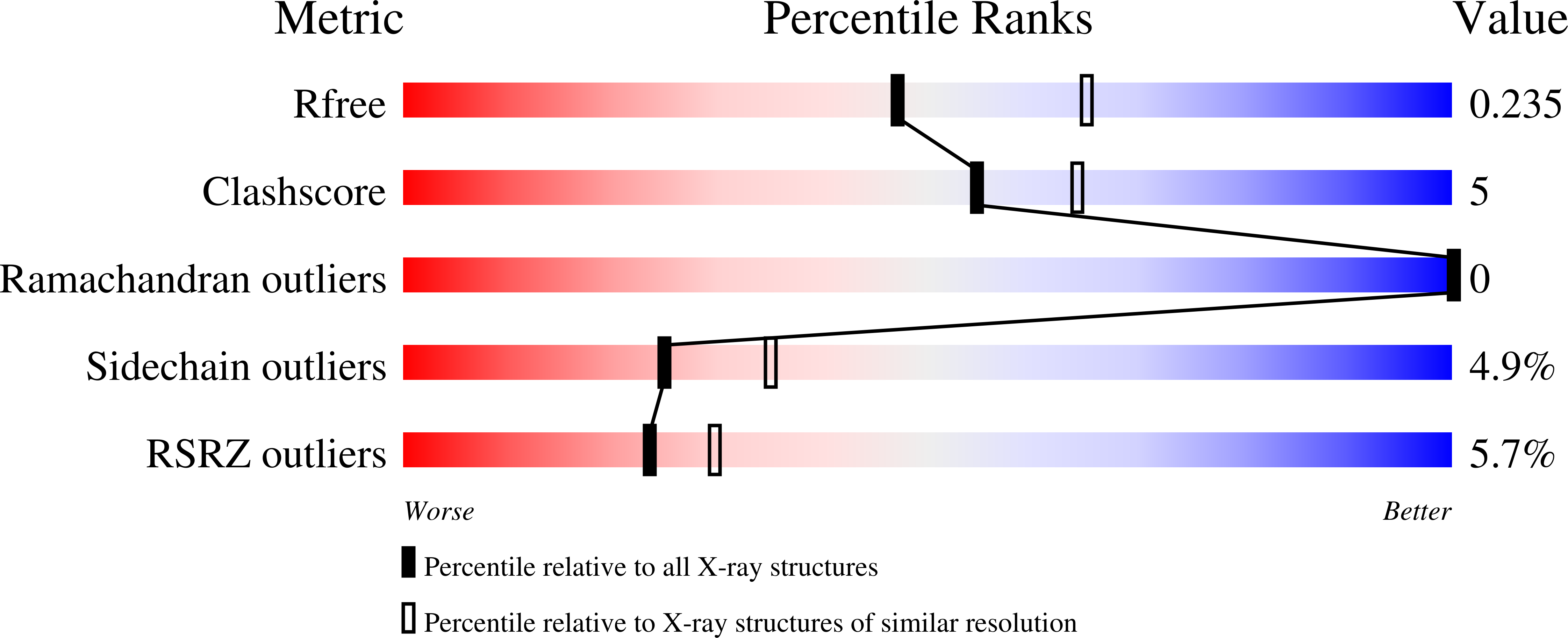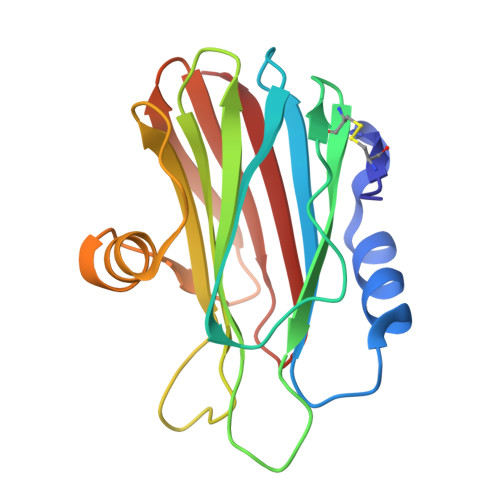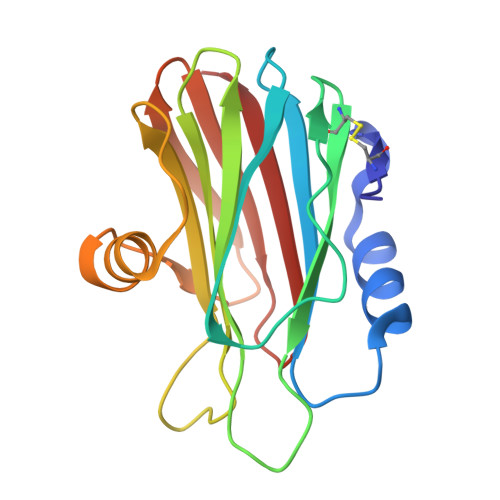Pore formation by equinatoxin, a eukaryotic pore-forming toxin, requires a flexible N-terminal region and a stable beta-sandwich
Kristan, K., Podlesek, Z., Hojnik, V., Gutierrez-Aguirre, I., Guncar, G., Turk, D.A., Gonzalez-Manas, J.M., Lakey, J.H., Macek, P., Anderluh, G.(2004) J Biological Chem 279: 46509-46517
- PubMed: 15322132
- DOI: https://doi.org/10.1074/jbc.M406193200
- Primary Citation of Related Structures:
1TZQ - PubMed Abstract:
Actinoporins are eukaryotic pore-forming proteins that create 2-nm pores in natural and model lipid membranes by the self-association of four monomers. The regions that undergo conformational change and form part of the transmembrane pore are currently being defined. It was shown recently that the N-terminal region (residues 10-28) of equinatoxin, an actinoporin from Actinia equina, participates in building of the final pore wall. Assuming that the pore is formed solely by a polypeptide chain, other parts of the toxin should constitute the conductive channel and here we searched for these regions by disulfide scanning mutagenesis. Only double cysteine mutants where the N-terminal segment 1-30 was attached to the beta-sandwich exhibited reduced hemolytic activity upon disulfide formation, showing that other parts of equinatoxin, particularly the beta-sandwich and importantly the C-terminal alpha-helix, do not undergo large conformational rearrangements during the pore formation. The role of the beta-sandwich stability was independently assessed via destabilization of a part of its hydrophobic core by mutations of the buried Trp117. These mutants were considerably less stable than the wild-type but exhibited similar or slightly lower permeabilizing activity. Collectively these results show that a flexible N-terminal region and stable beta-sandwich are pre-requisite for proper pore formation by the actinoporin family.
Organizational Affiliation:
Department of Biology, Biotechnical Faculty, University of Ljubljana, Vecna pot 111, 1000 Ljubljana, Slovenia.
















